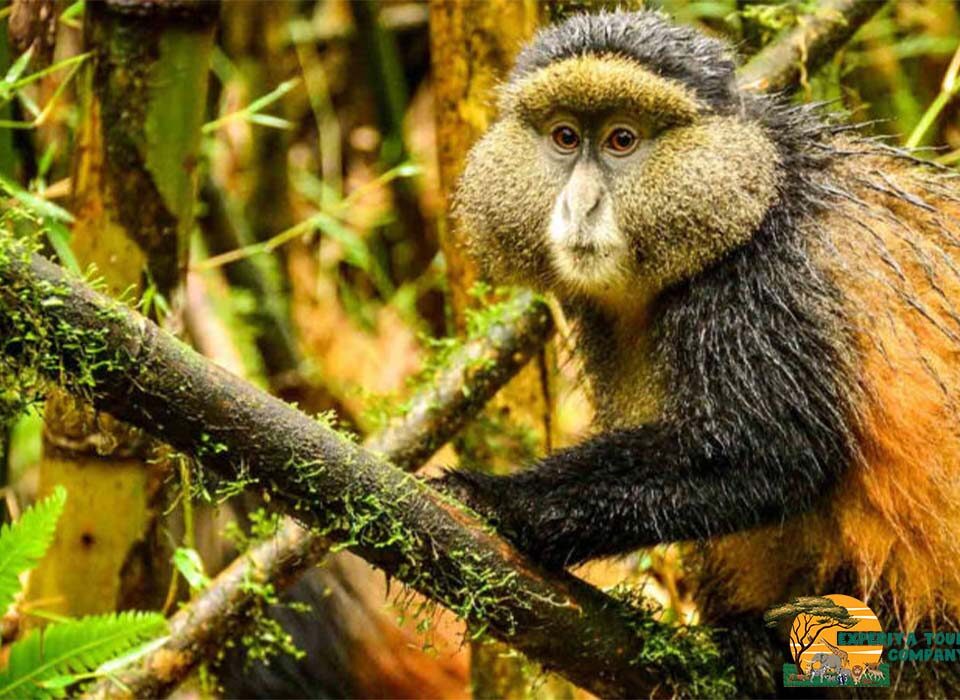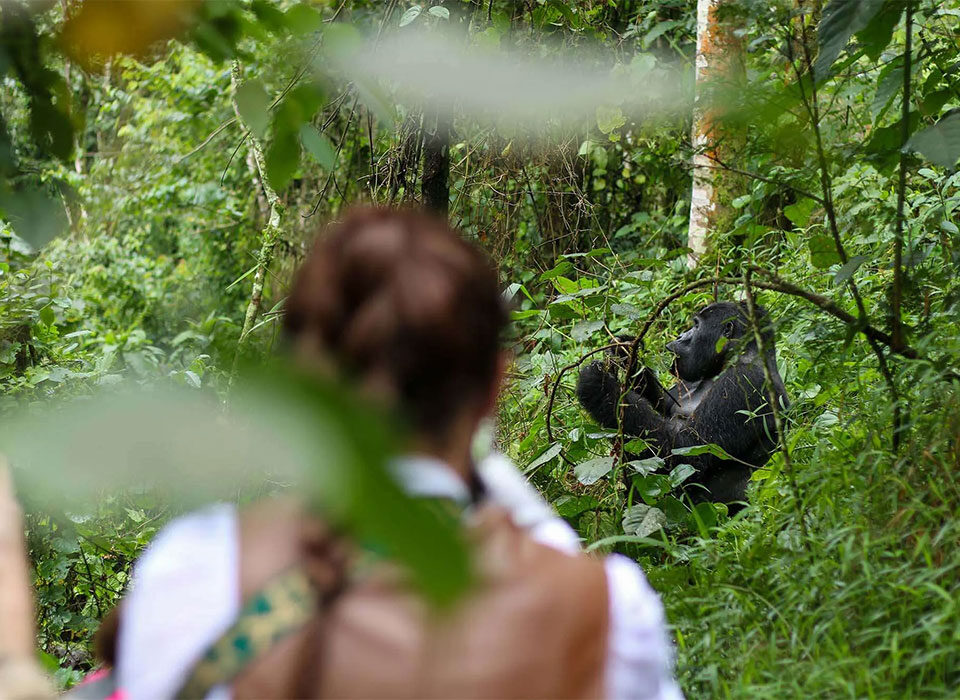
Where to See Shoebill Storks in Uganda | Uganda Birding Guide
October 24, 2025
Can I Combine Gorilla Trekking with Game Drives? | Uganda Safari Guide
October 24, 2025Best Park for Leopard Sightings in Uganda | Uganda Safari Guide

What’s the Best Park for Leopard Sightings in Uganda?
Among Africa’s great predators, few animals capture the imagination quite like the leopard. Stealthy, powerful, and stunningly beautiful, the leopard is the embodiment of wilderness mystery. Unlike lions that roam openly across the plains or cheetahs that chase prey in bursts of speed, leopards are solitary hunters — silent, elusive, and often concealed within the shadows. Spotting one in the wild is a thrilling and unforgettable moment for any safari traveler.
Uganda, often celebrated for its gorillas and chimpanzees, is also an incredible destination for big cat lovers. While the country’s savannah parks host a healthy population of lions, it’s the leopard that adds a special sense of intrigue to every game drive. Though naturally shy and nocturnal, leopards can be found in several Ugandan national parks, where keen-eyed guides and patient travelers often enjoy remarkable sightings.
So, what’s the best park for leopard sightings in Uganda? The answer depends on the type of experience you seek — from vast savannahs and riverine forests to rugged hills and remote valleys, Uganda’s landscapes offer multiple opportunities to encounter this magnificent cat. Below, we explore the top parks where leopards thrive, what makes each one special, and how to maximize your chances of seeing one.
Queen Elizabeth National Park – Uganda’s Leopard Haven
When it comes to leopard sightings, Queen Elizabeth National Park in western Uganda stands out as the country’s most reliable and rewarding destination. Covering nearly 2,000 square kilometers, this diverse park is a mosaic of savannah plains, tropical forests, and crater lakes — home to over 95 mammal species and more than 600 birds.
Leopards are found throughout the park, but sightings are especially frequent in the Ishasha sector and the Mweya Peninsula. Ishasha, located in the park’s southern reaches, is best known for its tree-climbing lions, yet leopards here also climb into fig trees and acacia branches, particularly during the cooler hours of the day. Their camouflage blends perfectly with the golden bark and spotted sunlight filtering through the leaves, creating picture-perfect moments for photographers lucky enough to spot them.
In the northern Kasenyi plains and Mweya area, leopards are often seen in the early mornings or late evenings along the tracks near bushy thickets and rocky outcrops. Night drives — one of Queen Elizabeth’s highlights — offer excellent opportunities, as leopards are most active after dusk. The beam of a spotlight sometimes reveals the glint of golden eyes, followed by the elegant silhouette of a leopard padding silently across the grasslands.
Queen Elizabeth’s combination of accessibility, diverse habitats, and high prey density (impalas, kob, and bushbuck) makes it the best park in Uganda for consistent leopard sightings. It’s also a park that provides a full wildlife experience — tree-climbing lions, elephants, hippos, buffalos, hyenas, and abundant birdlife along the Kazinga Channel.
Best areas to see leopards: Ishasha sector, Mweya Peninsula, and Kasenyi plains.
Best time to visit: December to February and June to September (dry seasons).
Murchison Falls National Park – Wild and Scenic Leopard Encounters
Murchison Falls National Park, Uganda’s largest and oldest park, is another top destination for leopard sightings. Spanning over 3,800 square kilometers, it’s a breathtaking landscape of rolling savannahs, riverine woodlands, and dramatic cliffs overlooking the Nile River. The abundance of prey and natural cover make it an excellent habitat for leopards.
Leopards are most commonly seen in the northern sector of the park — particularly around the Buligi, Pakuba, and Nyamsika areas. These regions are crisscrossed with game tracks where the cats often patrol early in the morning or rest in shady trees during the day. In the cooler evening hours, they become more active, sometimes seen stalking antelope near the riverbanks or crossing the open plains with graceful ease.
Night drives in Murchison are particularly rewarding, offering chances to see not only leopards but also other nocturnal predators like hyenas, civets, and genets. The park’s boat safaris on the Nile also present unique photographic opportunities — it’s not uncommon to see a leopard lounging in the trees along the river’s edge or drinking from the shallows as hippos grunt nearby.
Apart from leopards, Murchison Falls offers a rich variety of wildlife, including lions, elephants, giraffes, buffalos, oribis, and an astonishing array of birds. The combination of predator sightings and scenic beauty makes it one of Uganda’s most complete safari experiences.
Best areas to see leopards: Northern sector (Pakuba, Buligi, Nyamsika Cliffs).
Best time to visit: December to February and June to September for drier, easier game viewing.
Kidepo Valley National Park – Wild, Remote, and Rewarding
For travelers who crave raw wilderness and exclusivity, Kidepo Valley National Park is an extraordinary destination. Tucked away in Uganda’s remote northeastern corner near the borders with Kenya and South Sudan, Kidepo is a land of sweeping savannahs framed by rugged mountains — often described as “Africa’s best-kept secret.”
Though less visited due to its distance from Kampala, Kidepo is one of the most rewarding parks for leopard sightings. The park’s predator population is strong and healthy, including lions, cheetahs, and spotted hyenas, but it’s the elusive leopard that often steals the show for those patient enough to look.
Leopards in Kidepo are frequently spotted near the Narus Valley, especially around rocky outcrops and along dry riverbeds where they stalk prey. The combination of open grassland and scattered acacia trees offers excellent visibility, giving photographers an unparalleled opportunity to capture these magnificent cats in golden light. Because the park receives fewer tourists, sightings here feel deeply personal — it’s not uncommon to have the entire scene to yourself, with no other vehicles in sight.
Beyond predators, Kidepo’s wildlife diversity is astounding: elephants, giraffes, zebras, buffaloes, and over 470 bird species, including the ostrich. The solitude, scenery, and frequent leopard encounters make Kidepo a dream destination for photographers and true wilderness enthusiasts.
Best areas to see leopards: Narus Valley, Apoka area, and along the Kidepo River.
Best time to visit: Dry seasons from December to February and June to September.

Lake Mburo National Park – Close-Up Encounters in a Compact Setting
Though smaller and more tranquil than Uganda’s other parks, Lake Mburo National Park offers surprising opportunities for leopard sightings — especially during night drives. Covering just 260 square kilometers, this park is a perfect destination for travelers seeking a short safari from Kampala, as it’s only about a three-hour drive away.
The absence of lions and elephants gives Lake Mburo a unique charm. Its woodlands, rocky hills, and savannah plains provide ideal habitats for leopards, which thrive in this quiet environment. Because of the park’s manageable size, sightings are relatively frequent, particularly in the early morning and late evening when the leopards emerge to hunt impalas, warthogs, and bushbucks.
Night drives are one of the highlights here, allowing visitors to spot leopards prowling near the roads, sometimes just meters from the safari vehicle. The experience of catching their glowing eyes in the spotlight, surrounded by the sounds of the African night, is unforgettable.
In addition to leopards, Lake Mburo is home to zebras, topis, elands, hippos, and over 350 bird species. The combination of accessibility, peacefulness, and reliable leopard sightings makes it an underrated gem for wildlife lovers.
Best areas to see leopards: Near Rwonyo Rest Camp, Kazuma track, and Rubanga forest edge.
Best time to visit: Year-round, though dry seasons offer easier game drives.
Other Notable Leopard Habitats
While the parks above offer the best leopard experiences, several other protected areas in Uganda also host these elusive cats.
Kibale National Park: Better known for chimpanzees, this lush rainforest also harbors leopards, though sightings are rare due to the dense vegetation. Occasionally, leopards are seen along the park’s edge or caught on camera traps during research expeditions.
Toro-Semliki Wildlife Reserve: Located between the Rwenzori Mountains and Lake Albert, this reserve features open savannah and riverine forest where leopards thrive. It’s a quieter alternative for travelers seeking off-the-beaten-path encounters.
Pian Upe Wildlife Reserve: In northeastern Uganda, this vast semi-arid reserve supports a growing leopard population. It’s also one of the few places in Uganda where cheetahs still roam, offering an exciting mix of predators for adventurous travelers.
Tips for Spotting Leopards in Uganda
- Go on early morning or evening drives. Leopards are most active during dawn and dusk when they hunt.
- Take a night drive. Some of Uganda’s parks, especially Queen Elizabeth and Lake Mburo, offer guided night drives that increase your chances dramatically.
- Travel with an experienced guide. Skilled guides from licensed tour companies know the cats’ behavior and territories.
- Be patient and quiet. Leopards are masters of stealth; silence and patience often lead to the best sightings.
- Bring a good camera and binoculars. Many encounters happen from a distance or at night, so quality optics make a difference.
Why Queen Elizabeth National Park Tops the List
While each of Uganda’s parks offers a chance to see leopards, Queen Elizabeth National Park consistently delivers the best results. The park’s balanced ecosystem supports a healthy leopard population, and its combination of day and night game drives provides more viewing opportunities than anywhere else. The Ishasha and Mweya regions, in particular, are known for regular sightings, making the park an essential stop for anyone hoping to see this elusive cat in the wild.
Recommended Safari Operator: Experiya Tour Company
For the best chance of spotting leopards — and to experience Uganda’s wilderness in comfort and style — travel with a trusted safari expert. Experiya Tour Company is one of Uganda’s leading tour operators, offering tailor-made safaris designed to match your interests, schedule, and budget.
Their professional guides are experts at tracking Uganda’s elusive big cats, from the leopards of Queen Elizabeth to the lions of Kidepo and the cheetahs of Pian Upe. Experiya’s itineraries combine thrilling wildlife encounters with comfortable lodges, scenic drives, and authentic cultural experiences. Whether you’re embarking on a short safari or a full Uganda adventure, Experiya Tour Company ensures a seamless, safe, and unforgettable journey.
With Experiya, your search for Uganda’s most elusive predator becomes a story of adventure and discovery — one where patience meets reward beneath the golden African light.



